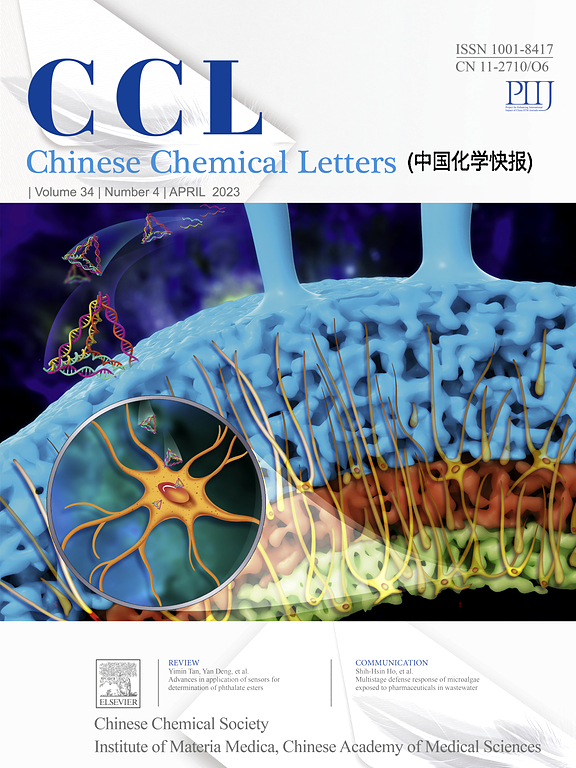通过表面化学工程控制方解石晶体内纳米颗粒的封闭程度
IF 8.9
1区 化学
Q1 CHEMISTRY, MULTIDISCIPLINARY
引用次数: 0
摘要
直接将聚合物纳米颗粒封闭到生长的主晶体中,为合成聚合物-无机复合晶体提供了一种通用的途径,其中客体纳米颗粒分布在晶体基质中。然而,系统地控制纳米颗粒在宿主晶体内的遮挡程度仍然是一个重大挑战。在这项研究中,我们采用一步无皂乳液聚合的方法合成了聚乙烯亚胺功能化聚甲基丙烯酸叔丁酯(PtBMA/PEI)纳米粒子。这些阳离子纳米颗粒随后使用甲醛修饰,通过eschweiller - clarke反应系统地调整表面胺基的含量。这种方法产生了一系列模型纳米颗粒,使我们能够研究表面化学如何影响方解石晶体内纳米颗粒的闭塞程度。我们的研究结果表明,方解石晶体内纳米颗粒的闭塞程度与表面胺基含量成正比。这项研究提供了一种新的设计规则,通过纳米颗粒闭塞策略来创建具有定制成分的复合晶体。本文章由计算机程序翻译,如有差异,请以英文原文为准。

Controlling the extent of nanoparticle occlusion within calcite crystals via surface chemistry engineering
Directly occluding polymer nanoparticles into growing host crystals provides a versatile pathway for synthesizing polymer-inorganic composite crystals, where guest nanoparticles are distributed within the crystal matrix. However, systematically controlling the extent of nanoparticle occlusion within a host crystal remains a significant challenge. In this study, we employ a one-step, soap-free emulsion polymerization method to synthesize polyethyleneimine-functionalized poly(tert‑butyl methacrylate) (PtBMA/PEI) nanoparticles. These cationic nanoparticles are subsequently modified using formaldehyde to systematically tune the content of surface amine group via the Eschweiler-Clarke reaction. This approach yields a series of model nanoparticles that allow us to investigate how surface chemistry influences the extent of nanoparticle occlusion within calcite crystals. Our findings reveal that the extent of nanoparticle occlusion within calcite crystals is proportional to the surface amine group content. This study offers a new design rule for creating composite crystals with tailored compositions through a nanoparticle occlusion strategy.
求助全文
通过发布文献求助,成功后即可免费获取论文全文。
去求助
来源期刊

Chinese Chemical Letters
化学-化学综合
CiteScore
14.10
自引率
15.40%
发文量
8969
审稿时长
1.6 months
期刊介绍:
Chinese Chemical Letters (CCL) (ISSN 1001-8417) was founded in July 1990. The journal publishes preliminary accounts in the whole field of chemistry, including inorganic chemistry, organic chemistry, analytical chemistry, physical chemistry, polymer chemistry, applied chemistry, etc.Chinese Chemical Letters does not accept articles previously published or scheduled to be published. To verify originality, your article may be checked by the originality detection service CrossCheck.
 求助内容:
求助内容: 应助结果提醒方式:
应助结果提醒方式:


